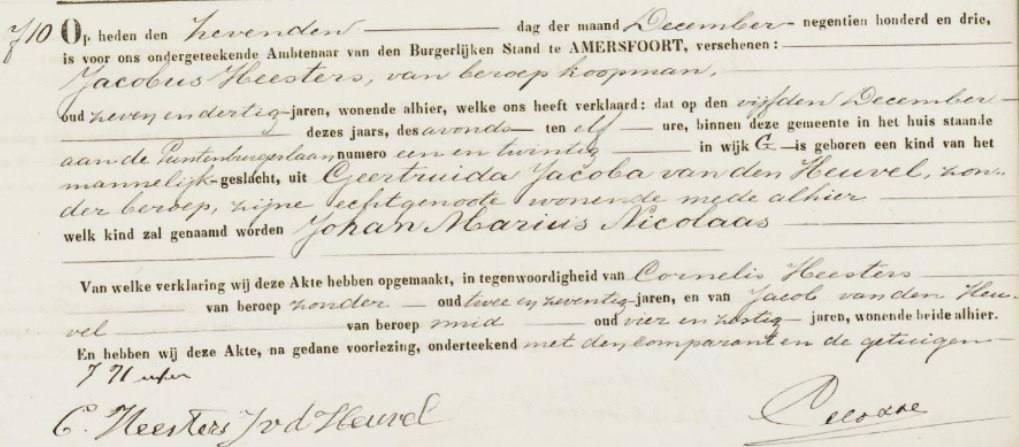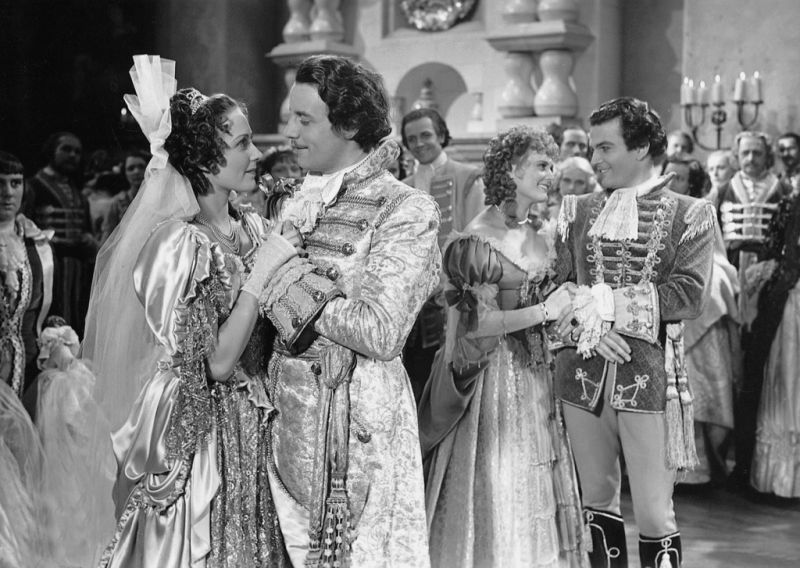
Below is the transcript of a Dutch court case, The defendant is only referred to as Mrs C. That is how the Dutch legal system still works nowadays, the name of a defendant is only indicated by the first letter of the surname.
The transcript dates 7 September 1947. Mrs C. is accused of treason and collaboration.
I don’t know what sentence she got but I presume she receive the death penalty.
Indictment, Accusation and Conviction of Mrs C. from Blasiusstraat in Amsterdam, who was involved with others in betraying Jewish families, including the family of Michel Gompers and Bertha Vogel.
“The accused Mrs C. was accused that, being Dutch, during the hostile occupation of the Empire in Europe:
A: Has generally shown National Socialist affiliation by joining the Dutch People’s Service in or around 1944; NSB window posters in the windows of her home, as well as attending NSB meetings and reading the magazines Volk en Vaderland and De Daad.
B: In or about 1943 M. Gompers and his wife and B. Vogel, a Jewish family, exposed them to detention or restriction of freedom by or on behalf of the enemy, by repeatedly providing the German police with information and instructions regarding both persons, at least as a result of which they were both arrested on or about 9 August 1943 by officers of the SD, as a result of which they provided aid and support to the enemy; on the basis of which actions it must be deemed to have deliberately acted contrary to the interests of the Dutch people.
The testimony of M. Gompers, as recorded in the official report dated March 4, 1946, by two police officers of the Municipality of Amsterdam, read: During the major Jewish roundup in June 1943, the Germans also came to my house in the Blasiusstraat in Amsterdam. My wife and I were not apprehended at the time, because my wife had proof from Dr Peeters, who was able to submit, stating that she was a carrier of typhus bacilli. I then saw and heard from my home that Mrs C. said to one of the German officers: “that woman is not ill, she always walks outside”, to which the German said: “that has nothing to do with you, what I do is good.” I then heard Mrs C. say to the bystanders: “We are going to Euterpestraa tomorrow”. The next day two men indeed came, who said they were from the SD. They told us, after we read the statement of Dr Peeters, but not taken with them. On the evening of August 9, 1943, I was in my house together with my wife, despite the statement of Dr Peeters arrested by two SD men and then transferred to Euterpestraat. Shortly afterwards my wife and I were transferred via the Hollandse Schouwburg to the Jewish Hospital. My wife, as I later learned, committed suicide during her transport to Westerbork by taking poison. On September 19, 1943, I received word of her death; I was able to escape from the hospital myself.
Mrs C. herself stated the following at the hearing:
In 1943, during a raid on Jews in the street where I lived, I said to the German police: “The good Jews take you away and the bitches leave you alone”, pointing in the direction of the house of the M. Gompers. I was at odds with the Gompers family because my children, who had been to the East Mark, were often teased in the neighbourhood. Furthermore, I could not bear the fact that many Jews with whom I lived on good terms were arrested and taken away, while the Gompers family constantly managed to evade arrest. I then drew the attention of the German police to the Gompers family during the aforementioned raid. The Gompers family was not arrested during that raid. Gompers and his wife B. Vogel were taken away by the Germans sometime later. The testimonies are unfavourable to me because I was disliked in the neighbourhood; since my children were frequently teased, I often threatened the German police, but without carrying out my threat….
Judgment, Conviction and Sentence rendered on September 9, 1947, in which the accused is declared guilty of the aforementioned which is declared proven and imposes the following measures on the accused:
1): internment whereby it is suggested that the duration thereof be limited to four years and that the time spent by the accused in pre-internment from 8 June 1945 be deducted from this, so that internment should end on 8 June 1949.
2): Deprivation of the right to vote and eligibility in elections held pursuant to statutory regulations.
Determines, as necessary, that the administration of the accused’s property shall end within three months after the internment has ended.”
sources
https://www.joodsmonument.nl/nl/page/32364/bertha-gompers-vogel
https://www.joodsmonument.nl/nl/page/641263/verraad-beschuldigd-veroordeeld.















You must be logged in to post a comment.